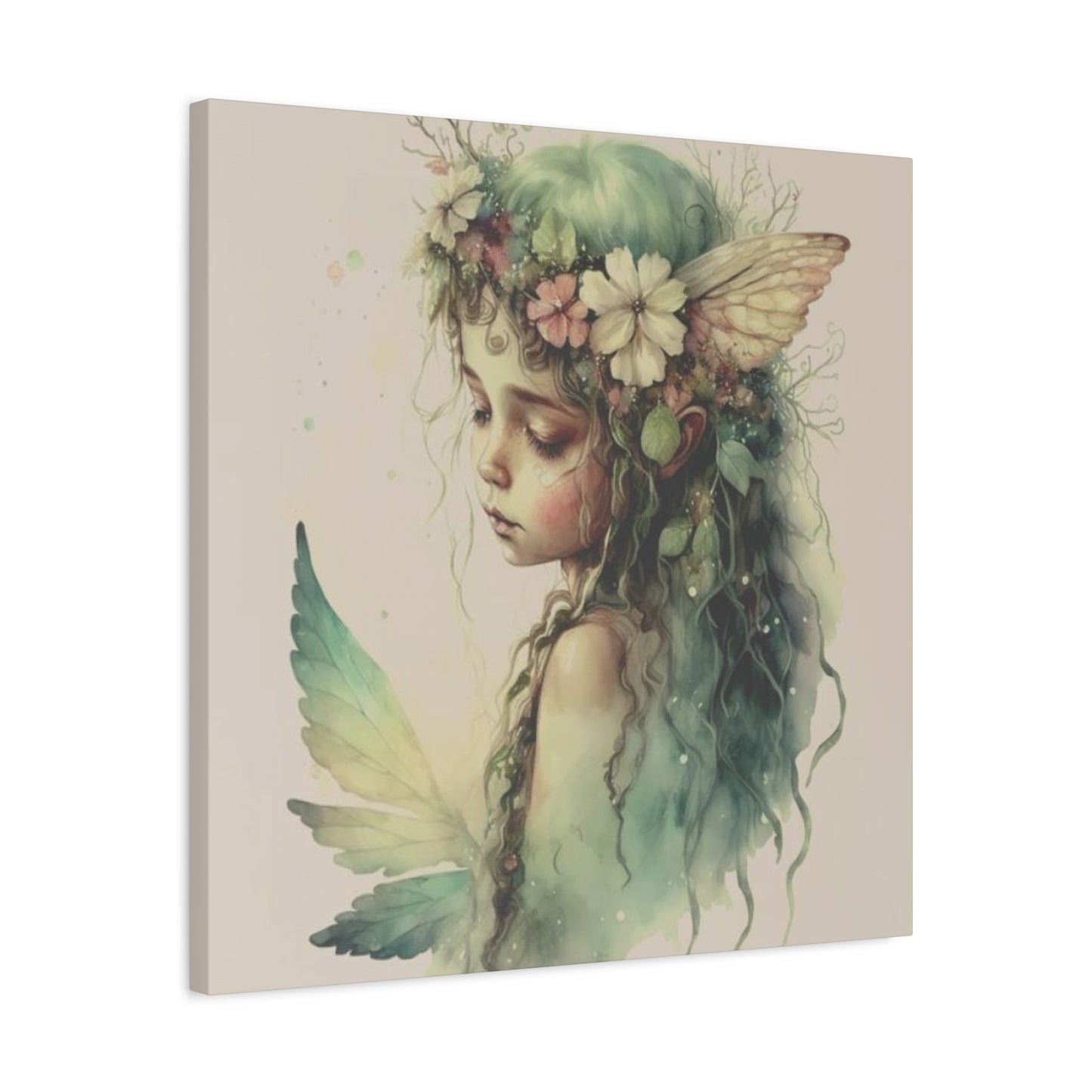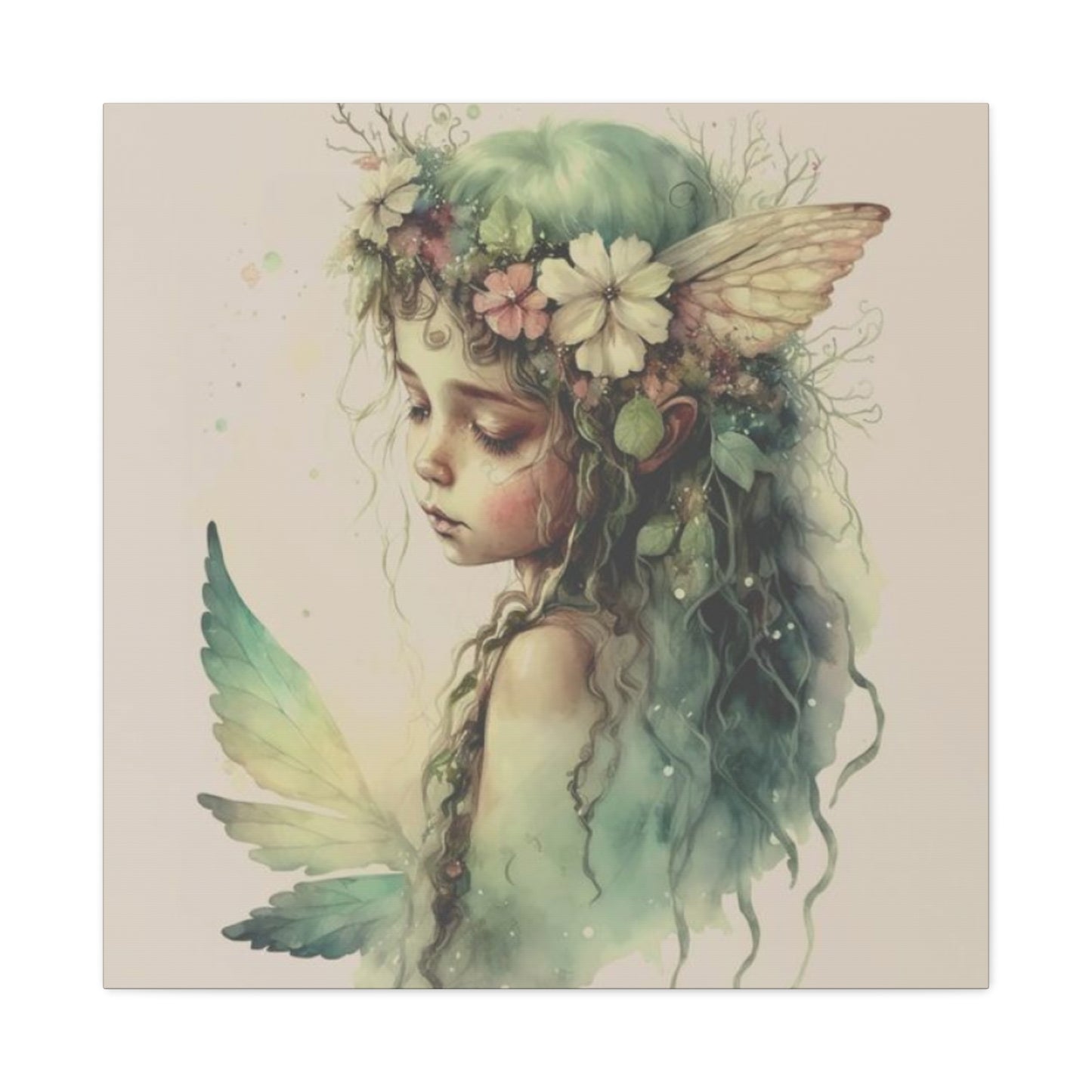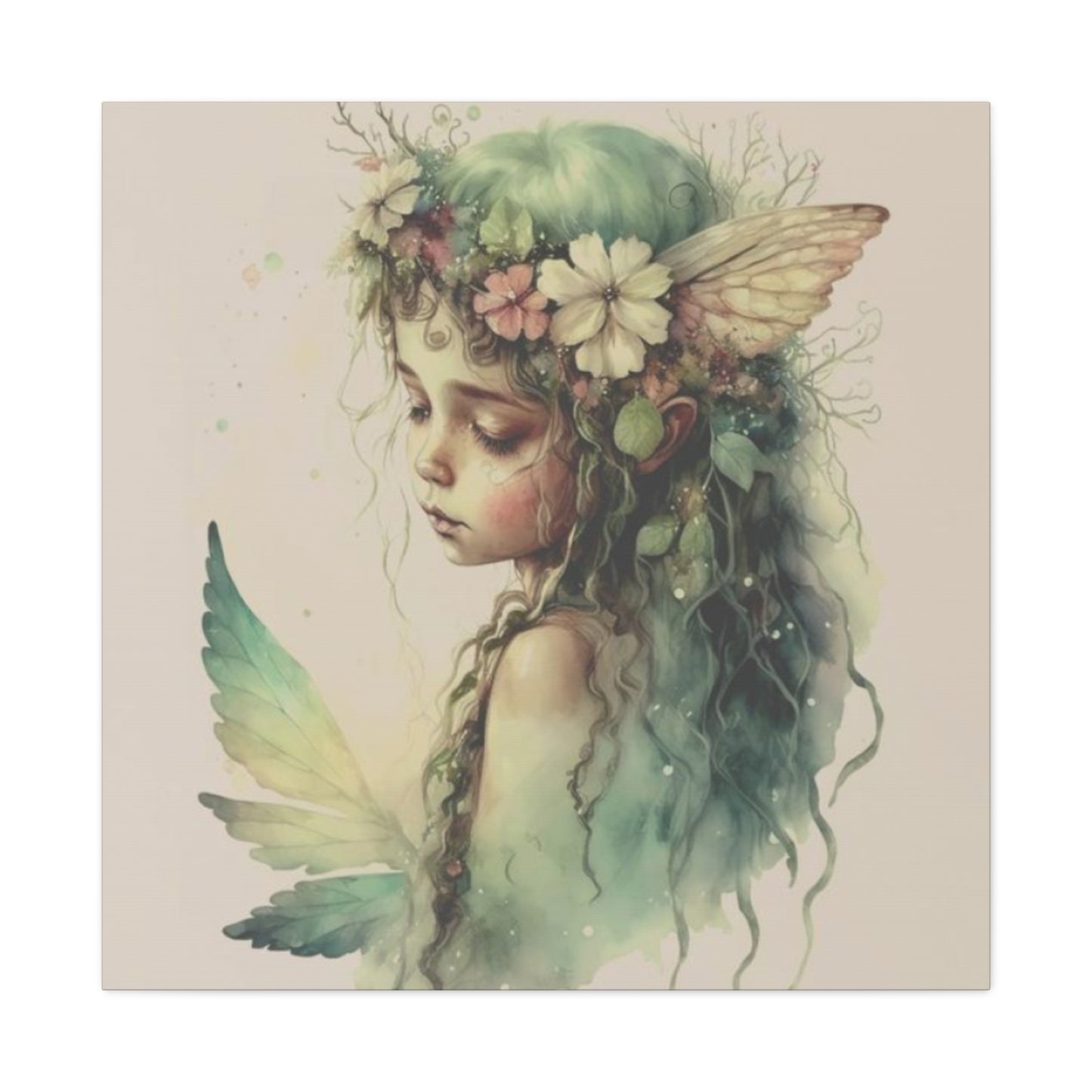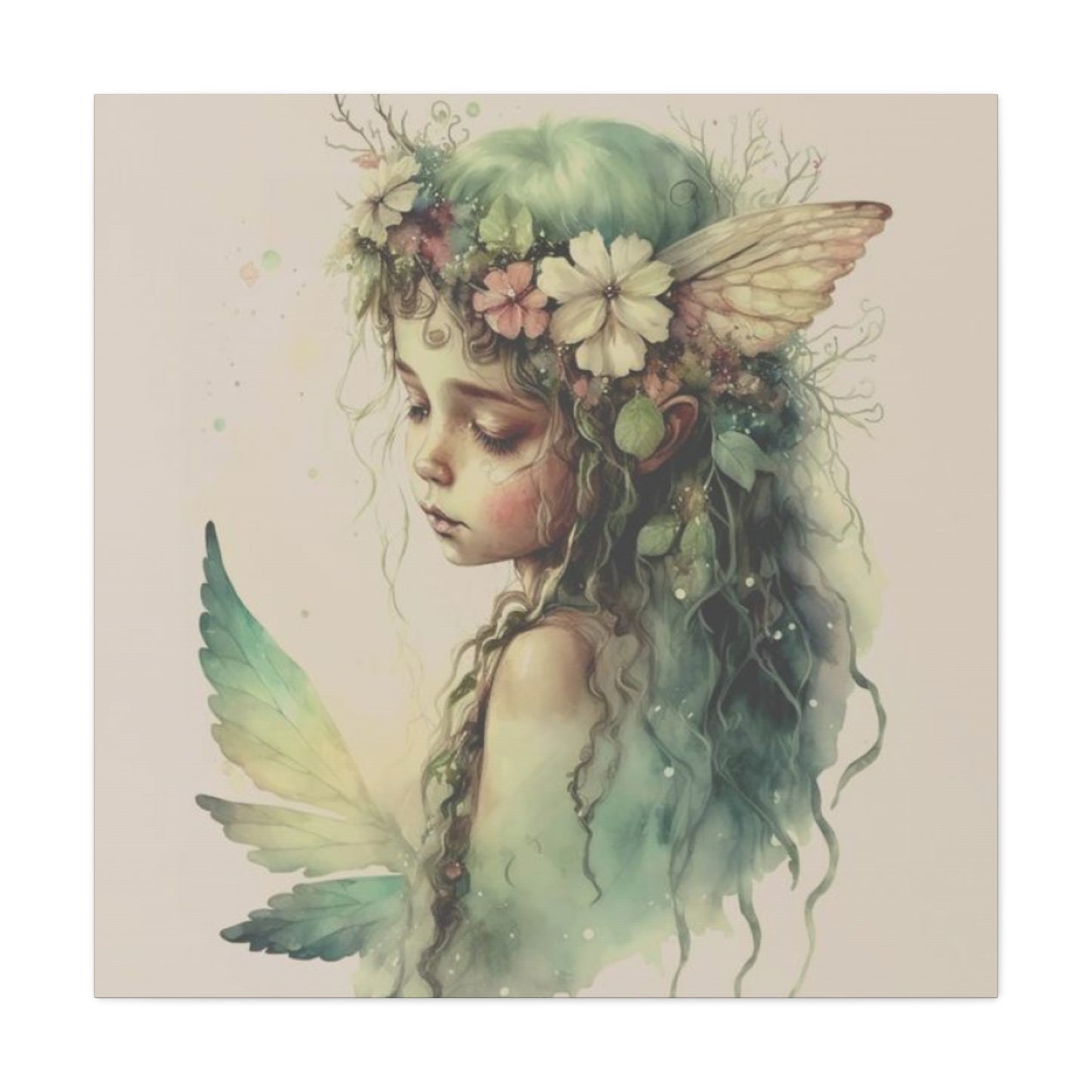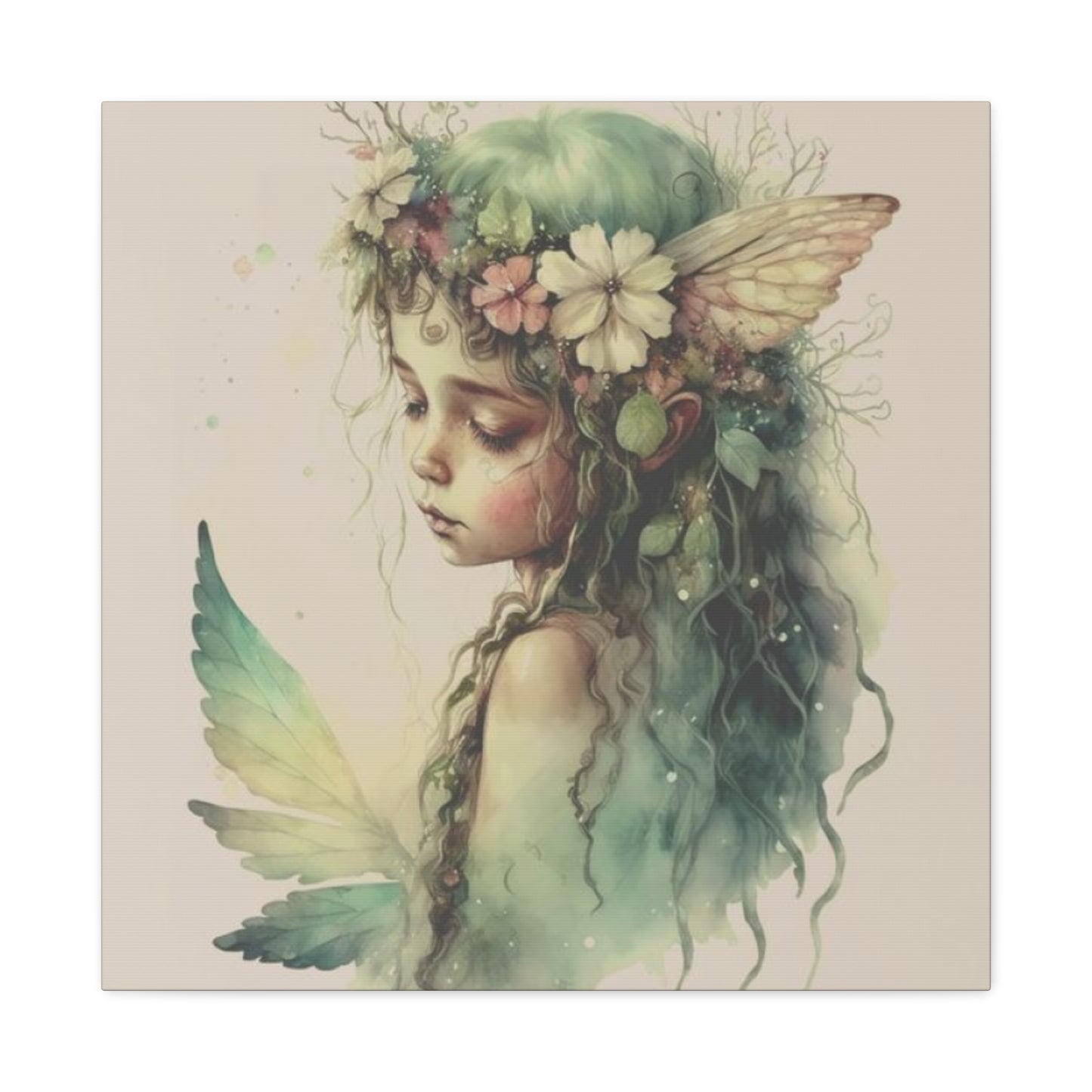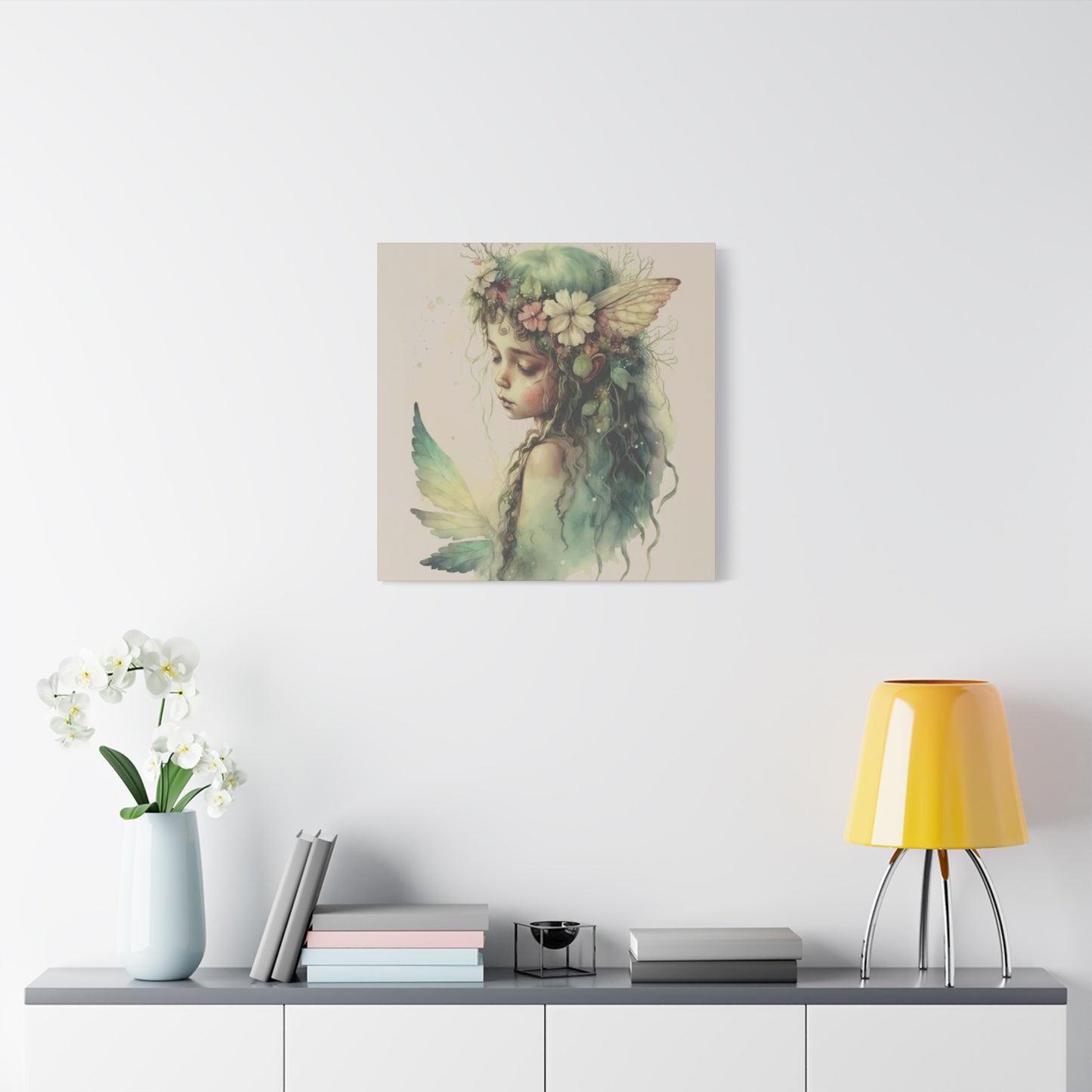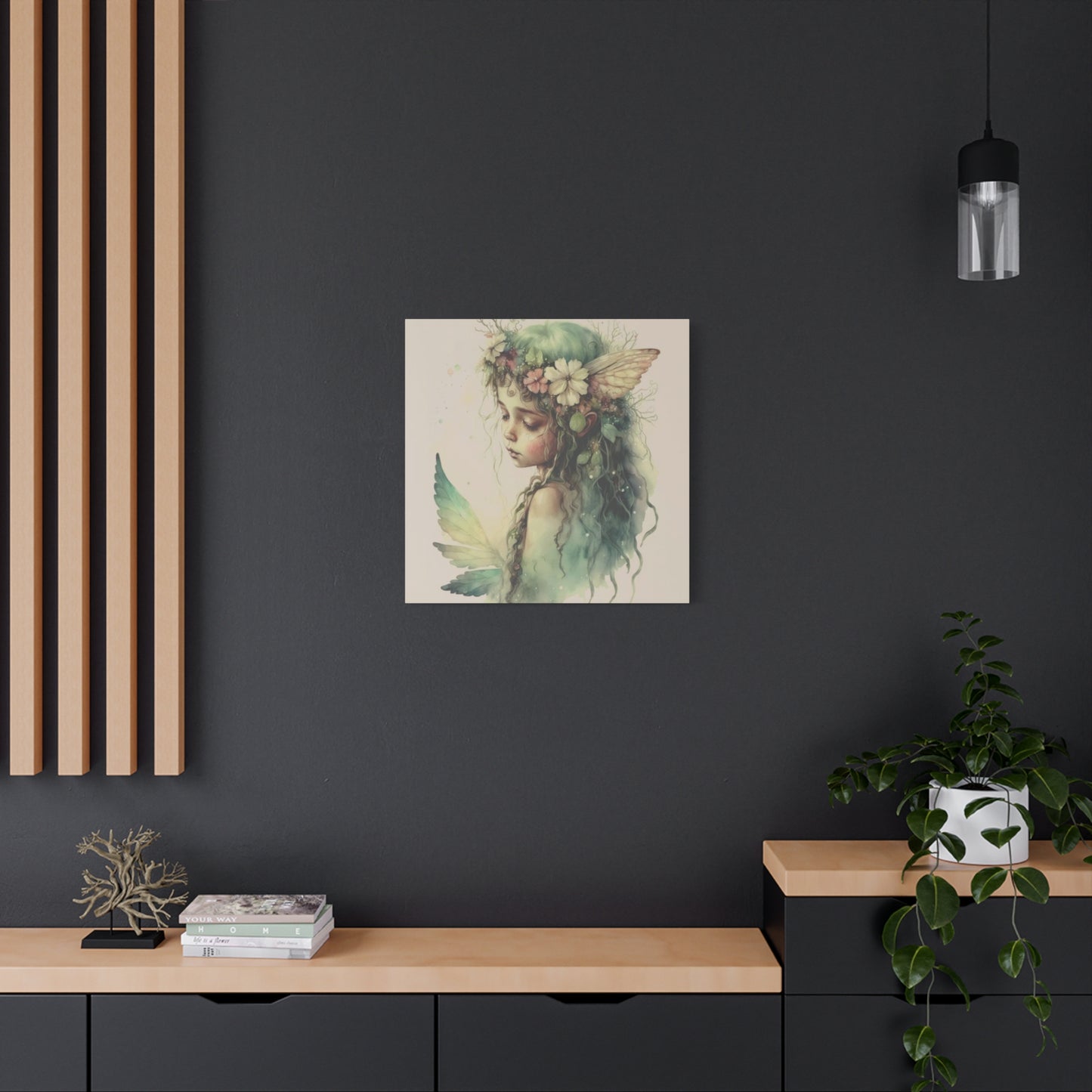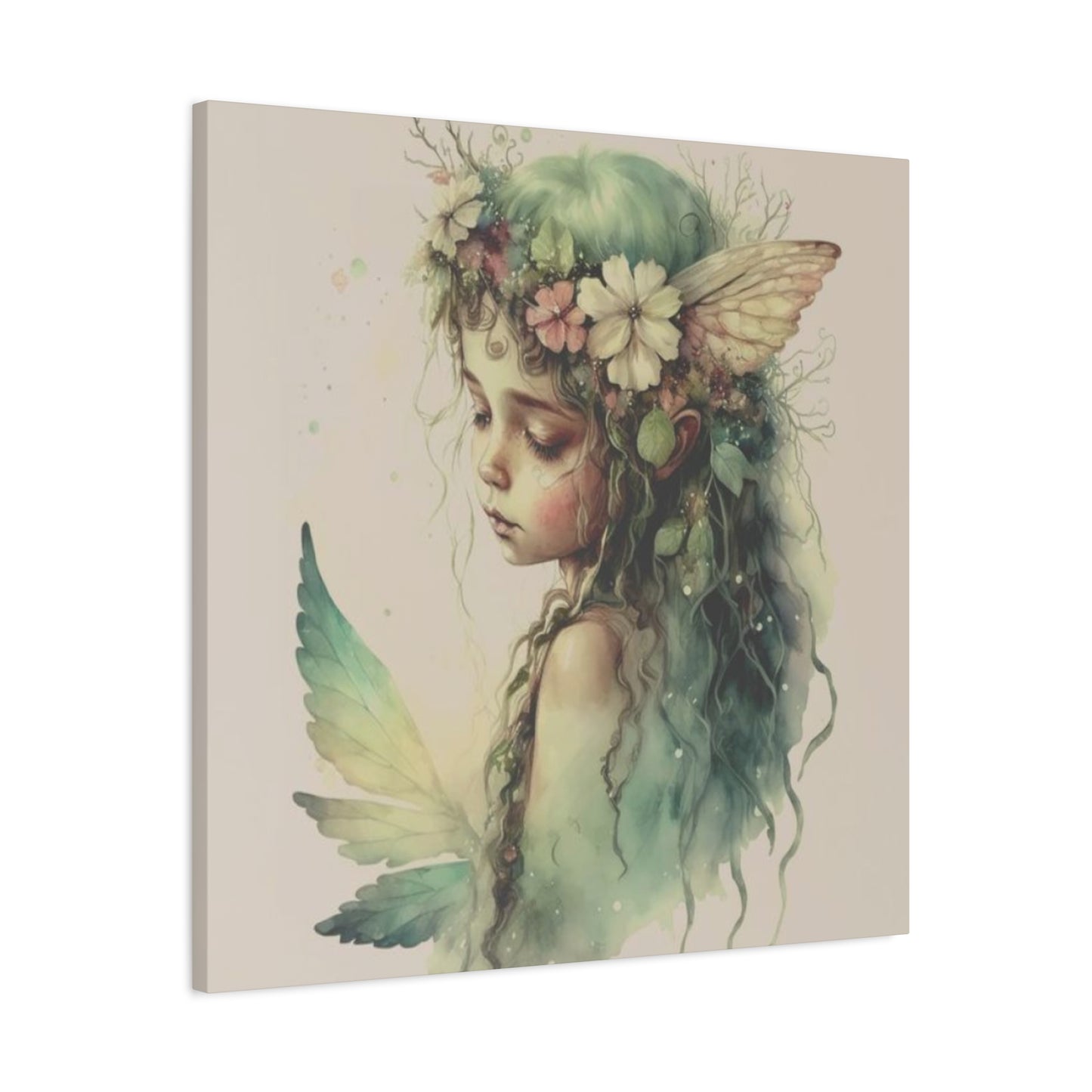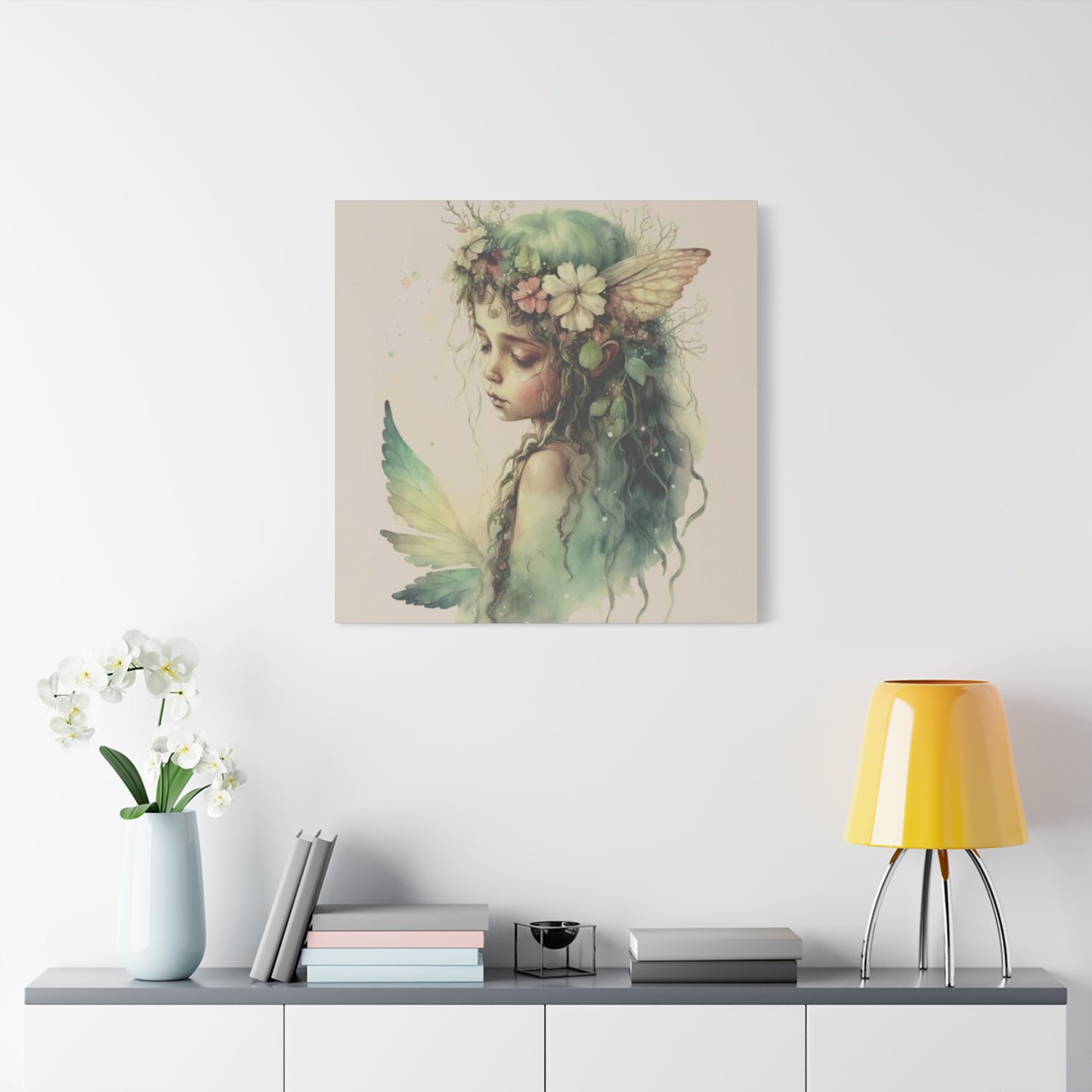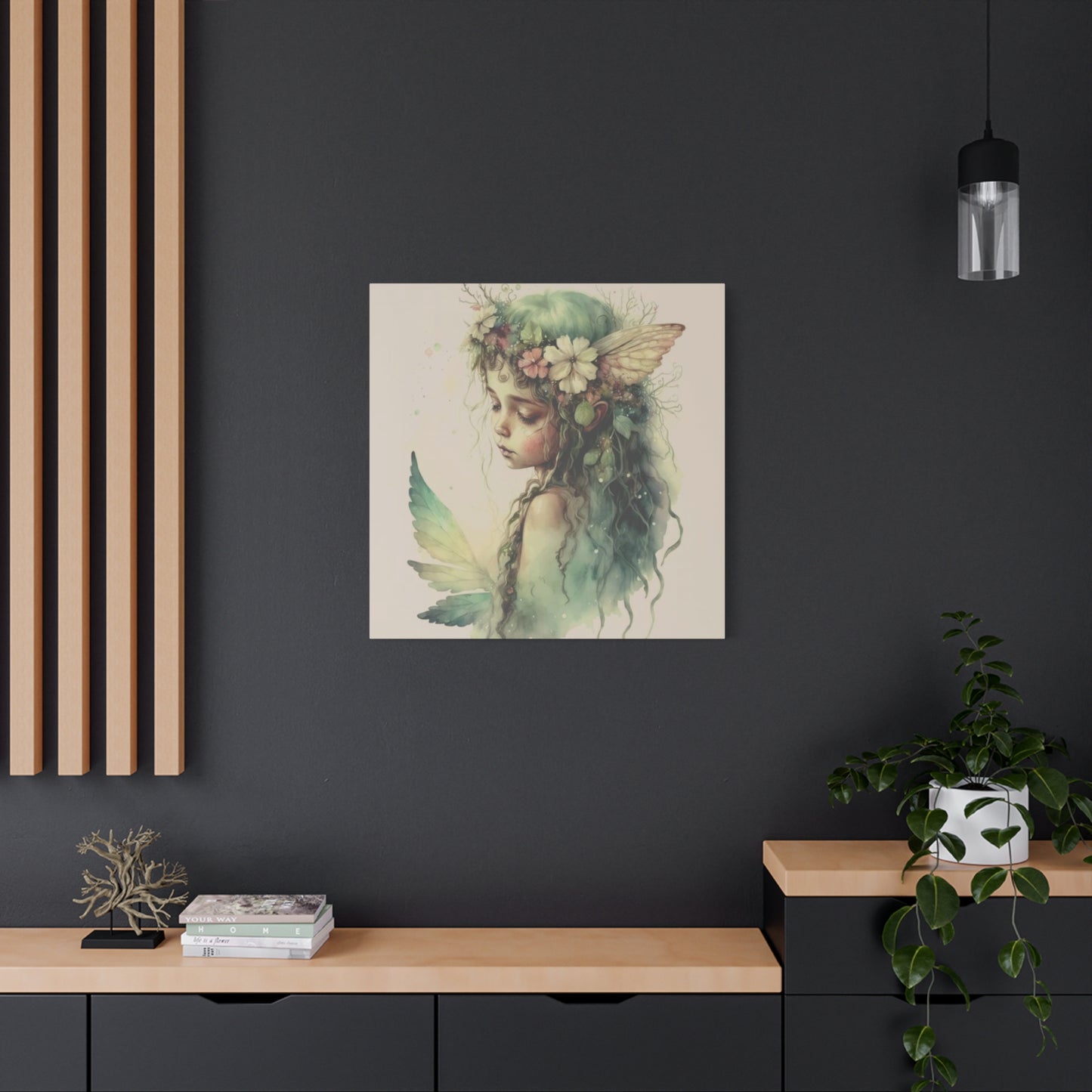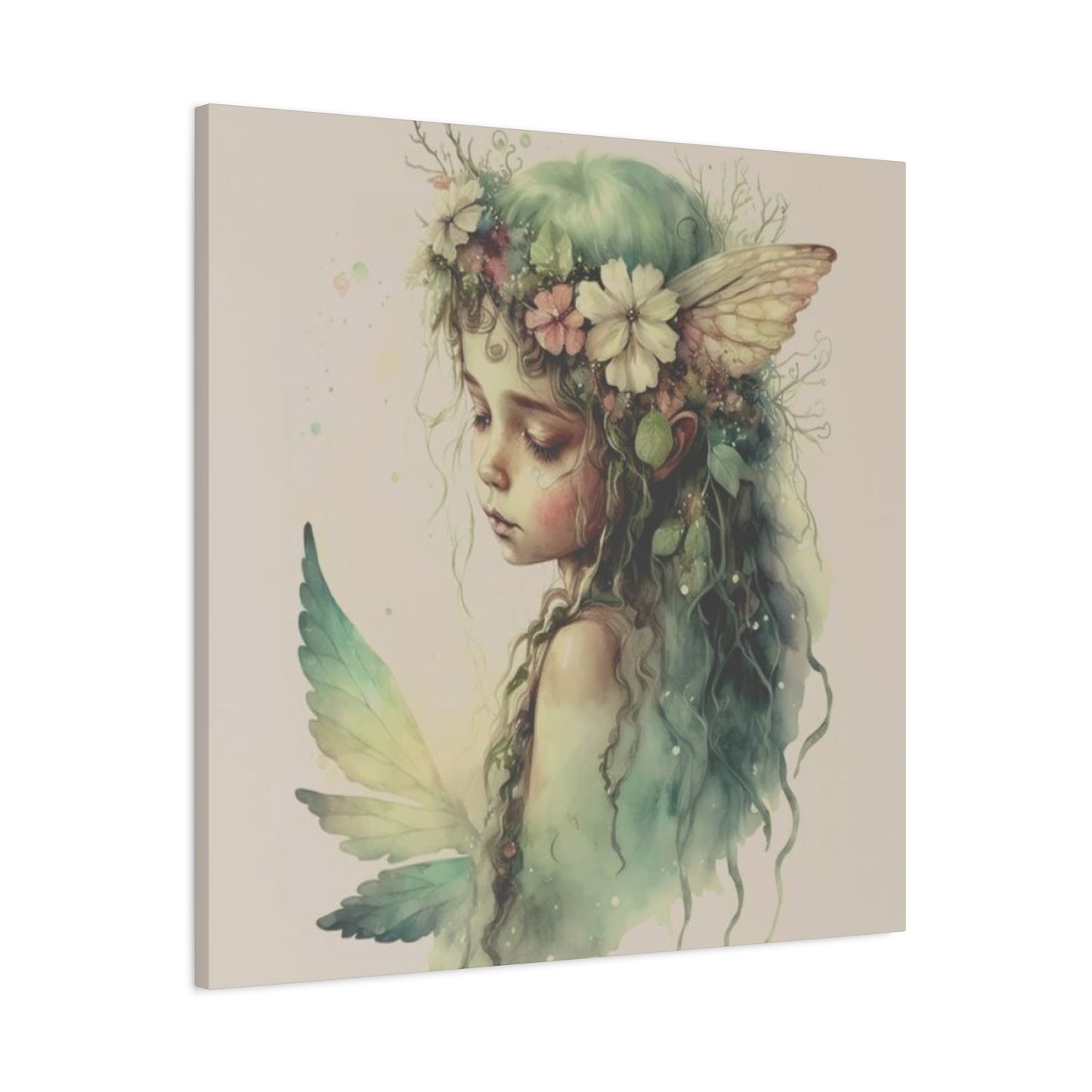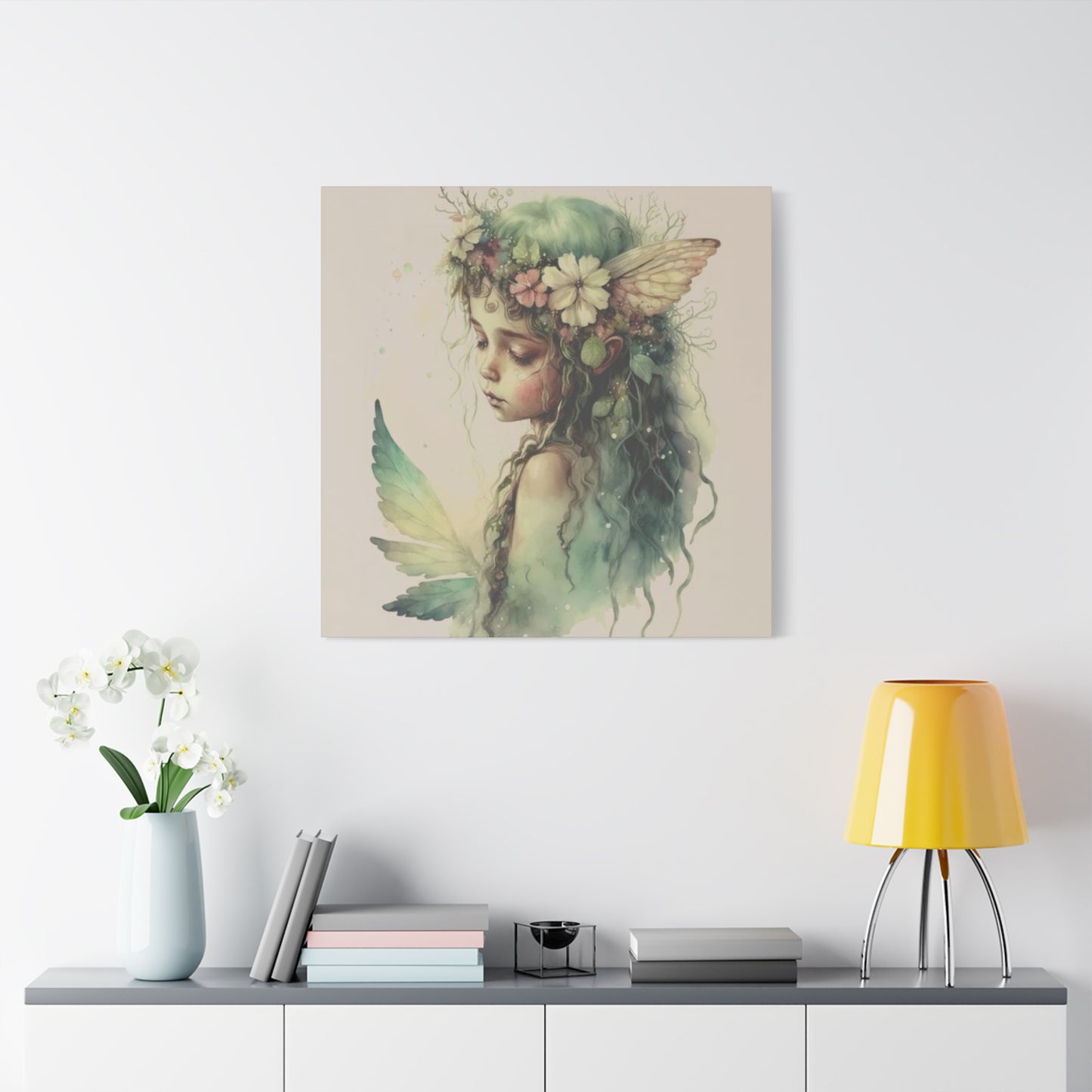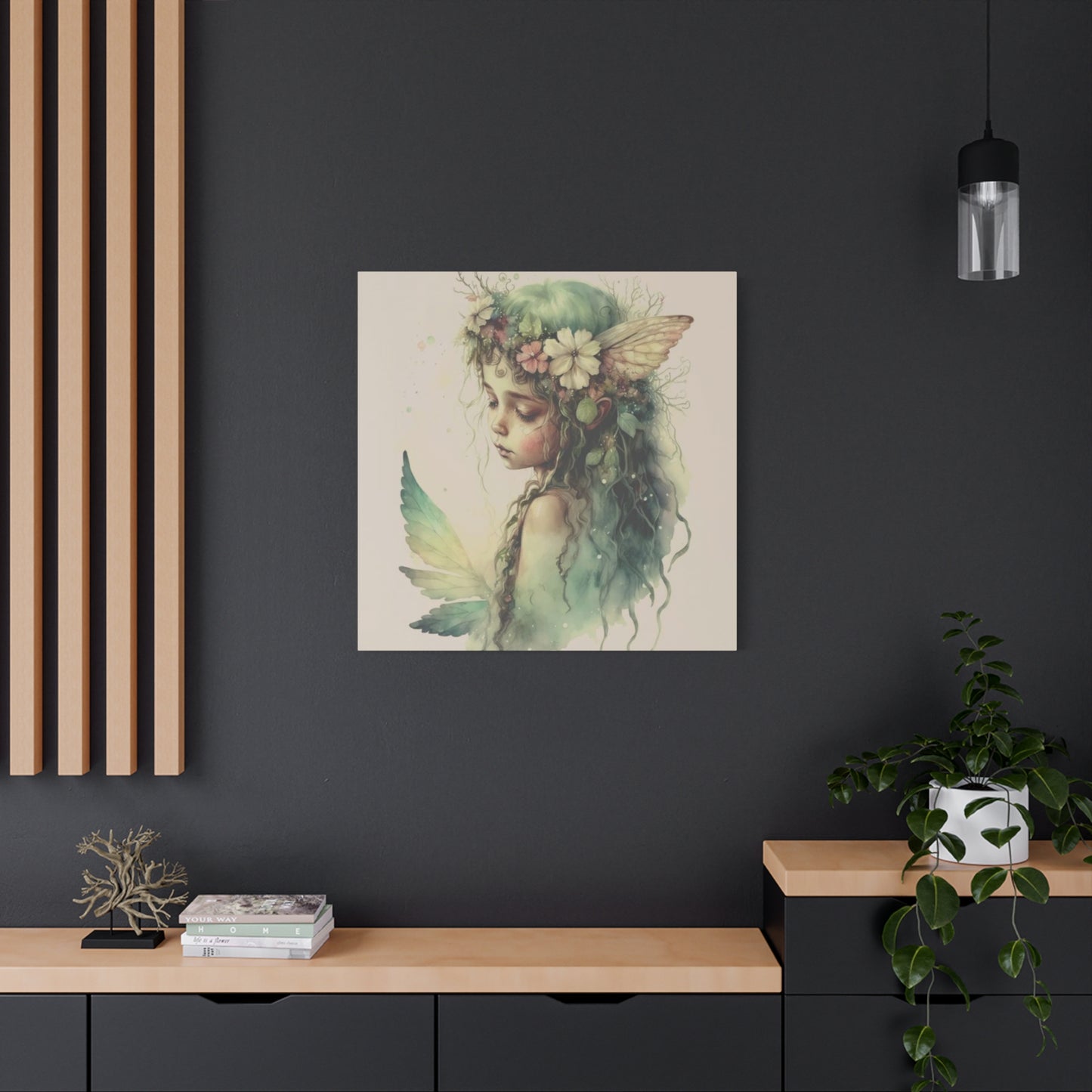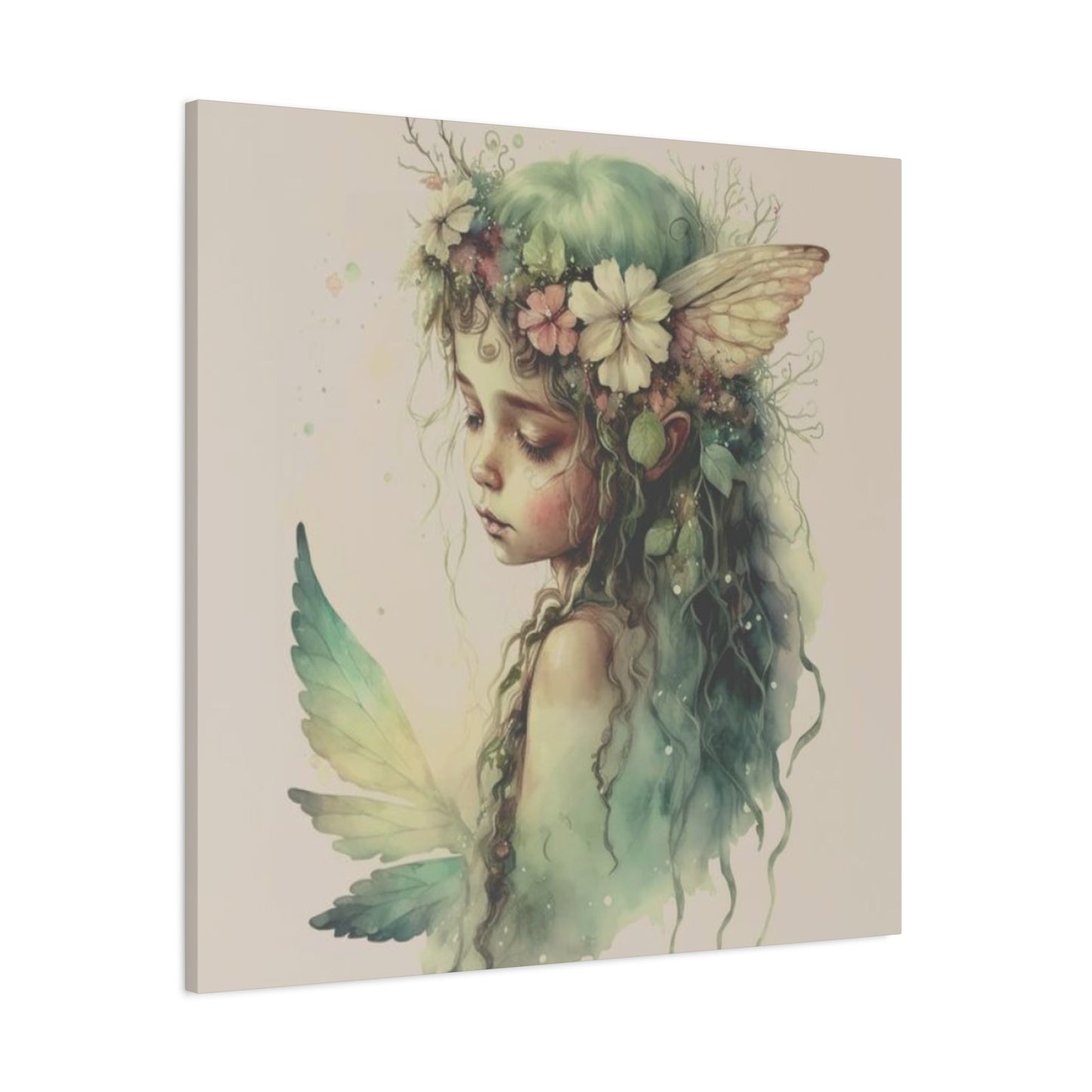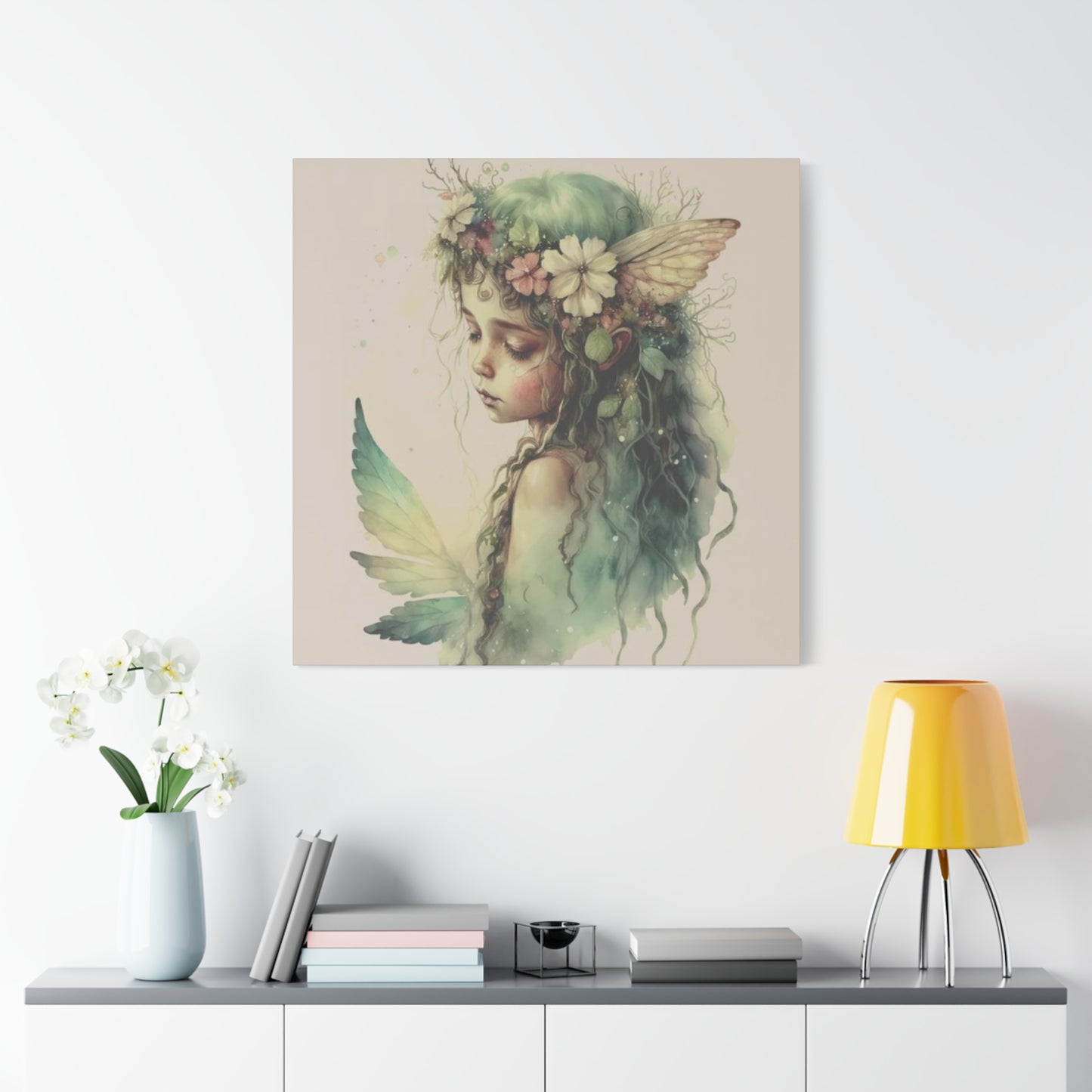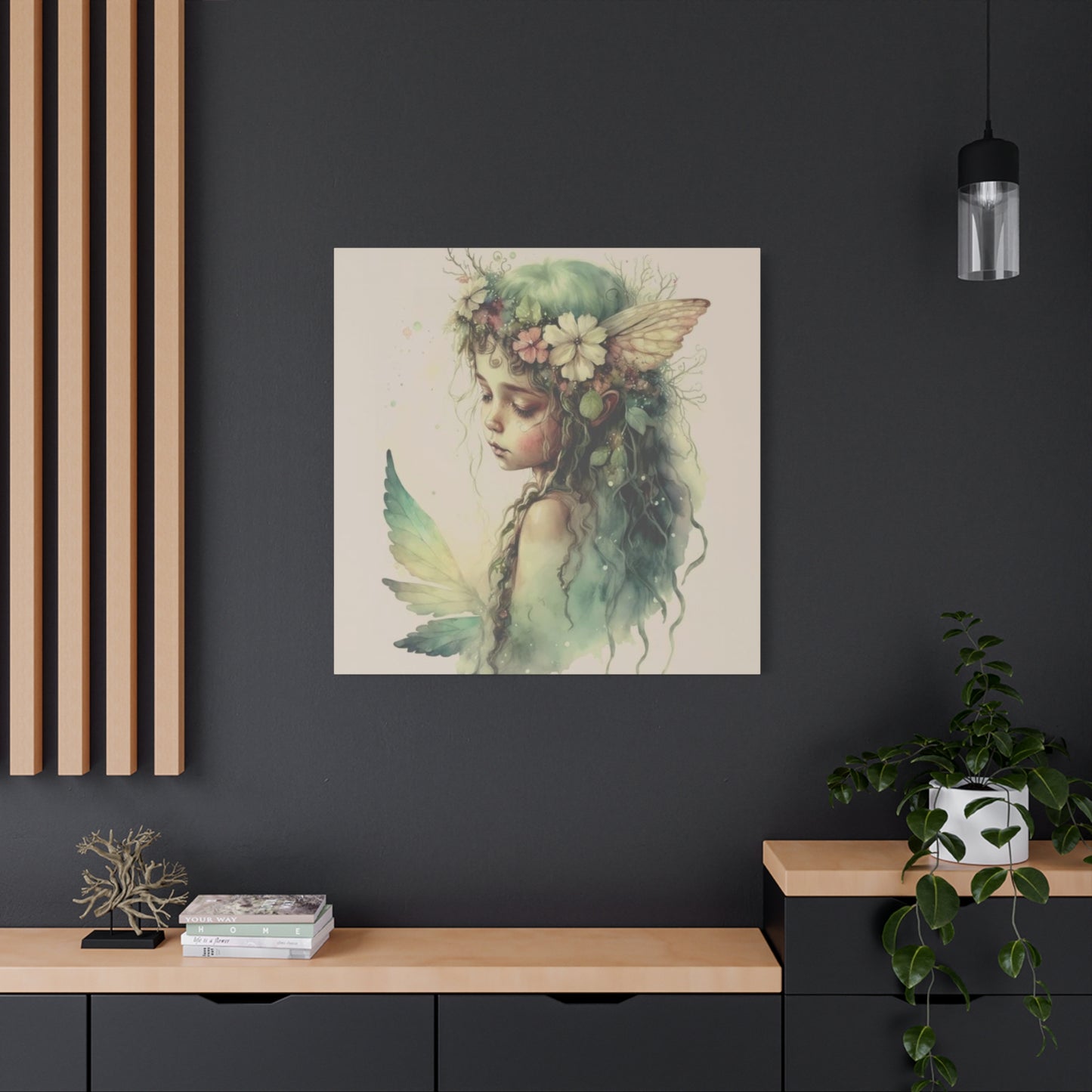Little Angel Fairies Wall art: Bringing Magic and Serenity to Your Living Spaces
Creating a space that radiates warmth, imagination, and peaceful energy is something many homeowners and decorators strive to achieve. One of the most captivating ways to infuse your rooms with a sense of wonder and gentle beauty is through carefully selected wall art that speaks to the heart. Canvas prints featuring delicate winged beings combine artistry with storytelling, transforming plain walls into portals of imagination. These decorative pieces serve not just as visual elements but as companions that watch over spaces, bringing comfort and inspiration to those who inhabit them.
The appeal of such artwork lies in its versatility and timeless charm. Whether you are designing a nursery for a newborn, refreshing a child's bedroom, or adding a touch of whimsy to an adult living space, these ethereal designs offer something special. They bridge the gap between childhood fantasy and sophisticated design, making them suitable for various interior styles. From minimalist modern homes to vintage-inspired cottages, the right canvas featuring these heavenly creatures can complement and elevate any aesthetic.
In recent years, there has been a significant revival of interest in fantasy-inspired home décor. People are increasingly drawn to designs that offer an escape from the mundane and bring elements of storytelling into their daily environments. This trend reflects a broader cultural movement toward mindfulness, imagination, and creating personal sanctuaries within our homes. Art featuring these celestial beings taps into this desire perfectly, offering visual narratives that spark joy and contemplation.
The beauty of canvas art depicting these magical entities is that it transcends age boundaries. While children naturally gravitate toward the fantastical and magical, adults too find solace and inspiration in these gentle reminders of wonder. For parents, choosing such artwork for their children's spaces becomes an opportunity to foster creativity and imagination from an early age. For others, it serves as a personal reminder to maintain a sense of wonder and possibility in their daily lives.
Understanding the various styles, themes, and applications of this type of wall art helps in making informed decisions that align with your personal taste and the mood you wish to create. From soft pastel palettes that soothe and calm to vibrant compositions that energize and inspire, the range of available designs ensures that everyone can find something that resonates with their vision. The following sections will explore the many facets of this enchanting art form and how it can transform your living spaces.
Captivating Wall Designs with Winged Celestial Beings
When it comes to decorating walls with artwork that features delicate winged figures, the possibilities are virtually endless. These designs range from realistic depictions to abstract interpretations, each offering a unique visual experience. The enchanted nature of these pieces lies in their ability to transport viewers to realms of imagination while maintaining an elegant presence in contemporary spaces.
One of the most appealing aspects of these canvas prints is their ability to serve as focal points in a room. A well-chosen piece can anchor a space, drawing the eye and setting the tone for the entire area. The walls become more than just boundaries; they transform into storytelling surfaces that communicate mood, personality, and aesthetic preferences. The enchanted quality of these artworks comes from their combination of innocence and ethereal beauty, creating a sense of protective warmth.
The artistic style of these prints varies widely, allowing for personalization based on individual preferences. Some designs feature detailed, almost photorealistic renderings of these celestial beings, complete with intricate wing patterns and expressive faces. Others take a more impressionistic approach, using soft brushstrokes and muted colors to suggest rather than explicitly depict these magical creatures. Still others embrace a more modern, graphic style with clean lines and bold color blocks.
Color palette plays a crucial role in how these artworks impact a space. Soft pastels like blush pink, powder blue, lavender, and mint green create a serene and gentle atmosphere, perfect for nurseries and bedrooms where calm is desired. These colors have a psychological effect, promoting relaxation and peaceful sleep. On the other hand, brighter, more saturated colors can energize a space, making them suitable for playrooms or creative areas where activity and imagination are encouraged.
Whimsical and Enchanting Room Designs with Celestial Artwork
Creating rooms that emanate wonder and whimsy requires careful attention to how different elements work together to craft an overall atmosphere. Artwork featuring ethereal winged beings serves as an excellent foundation for building these enchanting spaces. The whimsical nature of such designs brings a sense of playfulness and imagination that can completely transform how a room feels and functions.
Whimsy in interior design refers to elements that surprise, delight, and invoke childlike wonder. It is about embracing the unexpected and allowing imagination to guide aesthetic choices. When you incorporate canvas art depicting these celestial creatures into your décor, you immediately introduce an element of fantasy that softens the sometimes harsh realities of everyday life. These pieces remind us that magic exists in the small moments and that our environments can reflect our inner dreams.
The beauty of designing with such artwork is that it naturally lends itself to layered, thoughtful interiors. Rather than standing alone, these pieces work harmoniously with other design elements to create cohesive, immersive environments. Consider how the colors in the artwork can be echoed in textiles, furniture, and accessories throughout the room. A canvas featuring soft pinks and greens might inspire a color scheme that includes blush bedding, sage green curtains, and cream-colored furniture.
Lighting plays a vital role in enhancing the whimsical quality of these spaces. Soft, warm lighting creates shadows and highlights that bring the artwork to life, making the winged figures appear almost animated. String lights, paper lanterns, or dimmer switches allow you to adjust the ambiance according to the time of day and desired mood. The interplay between light and the canvas creates a dynamic visual experience that changes throughout the day.
Furniture selection also contributes to the overall whimsical aesthetic. Pieces with curved lines, vintage charm, or unexpected details complement the fantastical nature of the artwork. A vintage rocking chair, a canopy bed with flowing fabrics, or a whimsically painted dresser can echo the magical themes presented in the wall art. The key is to maintain balance between whimsy and functionality, ensuring the room remains practical while embracing its fantastical elements.
Textiles and soft furnishings offer another opportunity to reinforce the wonder inspired by the artwork. Layering different textures such as velvet, cotton, linen, and faux fur creates sensory richness that invites touch and exploration. Throw pillows featuring complementary patterns or colors, plush rugs that feel soft underfoot, and curtains that filter light beautifully all contribute to the overall atmosphere of enchantment.
Morning Radiance with Ethereal Wall Decorations
The way morning light interacts with wall art can completely transform a space, creating moments of breathtaking beauty that set a positive tone for the entire day. Canvas prints featuring celestial winged beings take on an almost luminous quality when touched by early sunlight, seeming to glow with an inner radiance that brings the artwork alive. This magical morning effect makes these pieces particularly special for bedrooms and spaces where you begin your day.
Natural light has unique qualities at different times of day, but morning light is particularly special. It tends to be softer and warmer than harsh midday sun, creating gentle shadows and highlights that add depth to artwork. When this light falls on a canvas depicting these ethereal beings, it can make their wings appear translucent, their expressions more animated, and the overall composition more dynamic. The effect is almost as if these guardian figures are greeting you each morning, welcoming you to a new day filled with possibilities.
Placement of artwork in relation to windows and natural light sources is crucial for maximizing this morning glow effect. East-facing walls receive the most direct morning light, making them ideal locations for pieces you want to be illuminated at dawn. However, even walls that receive indirect morning light can benefit from this effect, as the reflected and diffused light creates a general warmth throughout the room. Understanding the light patterns in your space helps you position artwork for maximum visual impact.
The colors within the artwork significantly affect how it responds to morning light. Lighter, more pastel shades seem to absorb and reflect morning light beautifully, creating an almost ethereal glow. Whites, creams, soft pinks, and pale yellows particularly benefit from this natural illumination, seeming to emit their own gentle light. Even deeper colors in the artwork can be transformed by morning rays, revealing subtle undertones and details that might be less apparent in other lighting conditions.
Canvas material itself contributes to this luminous effect. Unlike flat paper prints, canvas has a subtle texture that catches and reflects light in interesting ways. This texture creates micro-shadows and highlights across the surface that change as the angle of sunlight shifts throughout the morning. The result is artwork that feels alive and dynamic rather than static, constantly offering something new to discover.
Creating a morning ritual around appreciating this artwork can enhance your overall wellbeing and start your day on a positive note. Taking even just a moment to pause and observe how the light brings out new details in the art can serve as a mindfulness practice, grounding you in the present moment before the busyness of the day begins. This simple act of noticing beauty can shift your entire mindset, promoting gratitude and positivity.
The psychological benefits of starting your day surrounded by uplifting imagery should not be overlooked. What we see first thing in the morning can significantly influence our mood and outlook for hours to come. Artwork featuring protective, gentle winged beings provides positive, reassuring imagery that can ease morning anxiety and create a sense of safety and wellbeing. Combined with the natural beauty of morning light, these pieces become powerful tools for emotional regulation.
Protective Presence Through Canvas Artwork
Throughout history and across cultures, the concept of guardian beings has provided comfort and reassurance to people of all ages. Incorporating canvas art that depicts these tiny protective figures brings this comforting symbolism into modern living spaces. These small guardians serve as visual reminders of safety, care, and watchful protection, creating environments where inhabitants feel secure and cherished.
The idea of tiny guardians appeals to something fundamental in human psychology. From childhood, many of us develop attachments to the notion that benevolent beings watch over us, especially during vulnerable times like sleep. These canvas prints give visual form to this concept, making it tangible and present in our daily environment. For children, this can be especially meaningful, providing a sense of security that helps with bedtime routines and easing nighttime fears.
The artistic representation of these guardian figures varies considerably, each style conveying protection in its own way. Some depictions show serene, peaceful beings with gentle expressions that communicate calm watchfulness. Others feature more active, playful guardians who seem ready to spring into action. Still others take a more abstract approach, suggesting protection through symbolism and color rather than literal representation. Choosing the style that resonates most strongly with you or your child ensures the artwork fulfills its emotional purpose.
Placement of these guardian images within a room can be strategic. Many people choose to position them above beds, where they watch over sleeping occupants. Others prefer placing them near doorways, as if the guardians are welcoming you into the space or protecting the threshold. In nurseries, these prints often occupy central positions where they can be easily seen by both the child and caregivers, creating a shared sense of comfort and connection.
Creating Peaceful Spaces with Ethereal Decorations
Decorating the corners and smaller spaces within rooms often gets overlooked, yet these areas offer tremendous potential for creating moments of surprise and delight. Canvas prints featuring celestial winged beings work beautifully in these often-neglected spots, transforming them into dreamy corners that invite pause and reflection. These intentional design choices turn every part of a room into a thoughtfully crafted experience.
Corners, by their nature, tend to feel separate from the main flow of a room. They can become dead spaces that feel forgotten or awkward. However, when decorated thoughtfully, they transform into cozy retreats within the larger space. A canvas featuring a gentle guardian figure placed in a corner, perhaps accompanied by a comfortable chair and soft lighting, creates a reading nook or meditation spot that feels secluded and special. This corner becomes a destination within the room rather than wasted space.
The scale of artwork used in corners should be considered carefully. While a small piece might get lost in an expansive corner, an oversized print could overwhelm the intimacy of the space. Medium-sized canvases often work best, large enough to anchor the area but not so big that they dominate. The artwork should feel like it belongs in the corner, as if it has found its perfect home rather than being relegated there as an afterthought.
Layering is key to creating truly dreamy corners. The canvas serves as the visual anchor, but surrounding it with complementary elements builds a complete vignette. A small side table, a potted plant, some decorative objects, and perhaps a floor cushion or throw blanket create a layered, collected look that feels intentional and inviting. The artwork ties these elements together thematically, with the celestial beings presiding over the little sanctuary.
Lighting transforms corners from potentially dark, uninviting spaces into glowing refuges. A small table lamp, a floor lamp with a warm-toned bulb, or even battery-operated LED strips can illuminate the artwork and the surrounding area, creating a focal point even in evening hours. This lighting makes the corner usable at any time of day and adds another layer of ambiance to the room as a whole.
These decorated corners serve different purposes depending on the room and the inhabitant's needs. In a bedroom, a corner with calming artwork becomes a place for quiet reflection before sleep or upon waking. In a child's room, it might become a special spot for bedtime stories or imaginative play. In a living area, it could be a reading corner or a place to sit and enjoy a cup of tea while appreciating the artwork.
Playful Elements in Wall Design
Incorporating celestial themed artwork into wall designs offers an opportunity to bring an element of playfulness into spaces that might otherwise feel too serious or formal. The whimsical nature of these pieces featuring ethereal beings naturally lends itself to creative, lighthearted design approaches. This celestial play on your walls can transform the entire energy of a room, making it feel more welcoming, less rigid, and more aligned with the human need for joy and imagination.
Playfulness in design does not mean childish or immature. Rather, it refers to a willingness to embrace color, pattern, unexpected combinations, and elements that spark joy. When you hang canvas art depicting these magical beings, you immediately signal that this space values wonder and creativity. This sets a tone that influences how people feel and behave in the space, encouraging relaxation, creativity, and authentic self-expression.
One way to enhance the playful quality of these artworks is through unexpected placement. While traditional artwork placement follows strict rules about height and positioning, a more playful approach might place pieces at varying heights, creating a rhythm across the wall. Multiple canvases of different sizes arranged in an asymmetrical pattern can feel dynamic and energetic, capturing the essence of celestial beings in flight or play.
Mixing these ethereal canvas prints with other types of artwork and decorative elements creates visual interest and reinforces the playful theme. Consider combining them with nature prints, abstract art, vintage mirrors, or three-dimensional objects like small shelves holding treasured items. This eclectic approach tells a richer story and creates a more personalized space that reflects the complexity of the inhabitants.
Soft Color Palettes in Canvas Artwork
The colors featured in canvas art significantly impact how the piece affects its environment. Artwork depicting celestial winged beings often utilizes pastel and soft color palettes that bring a particular kind of magic to spaces. These gentle hues create atmospheres that feel soothing, nurturing, and ethereal, making them ideal for bedrooms, nurseries, and any space dedicated to rest and peace.
Pastel colors are essentially lighter, more muted versions of pure hues, created by adding white or using lighter values. This softening effect makes them less visually aggressive than saturated colors, allowing them to recede gently rather than demanding attention. When used in artwork featuring these heavenly beings, pastels reinforce the gentle, protective nature of the subjects, creating harmony between content and execution.
Pink pastels, ranging from blush to soft rose, are among the most popular choices for this type of artwork. These shades evoke feelings of tenderness, comfort, and unconditional love. They are neither overwhelmingly feminine nor gender-specific, instead reading as universally gentle and caring. When used in artwork featuring guardian figures, pink hues suggest nurturing protection and emotional warmth.
Lavender and soft purple tones bring a sense of calm and spirituality to artwork. These colors have long been associated with imagination, creativity, and connection to higher realms. In artwork featuring celestial beings, purple pastels feel particularly appropriate, reinforcing the otherworldly nature of the subjects. These shades also have scientifically documented calming effects, making them excellent choices for sleep spaces.
Pale blue is another common color in this type of artwork, bringing associations with sky, peace, and serenity. Light blue tones can make a space feel more open and airy, as they are reminiscent of clear skies. When combined with imagery of winged beings, these blues create a sense of flight and freedom, while maintaining a tranquil overall mood. The psychological effects of blue include lowered heart rate and reduced anxiety, making it ideal for calming spaces.
Mint green and soft sage tones introduce natural elements into the color palette. Green is the color of growth, renewal, and healing, making it a wonderful choice for spaces dedicated to rest and restoration. These gentle greens pair beautifully with other pastels and add a refreshing quality that prevents overly sweet or cloying effects that can sometimes occur with pink and purple combinations.
Impactful Wall Art with Delicate Imagery
There is a beautiful paradox in how artwork featuring tiny, delicate winged beings can create enormous visual and emotional impact. These small, gentle figures possess a power that goes beyond their diminutive size, commanding attention and transforming spaces in ways that larger, bolder subjects might not achieve. Understanding this dynamic helps in selecting and displaying artwork that makes a genuine statement while maintaining subtlety and grace.
The impact of these pieces comes partly from the contrast they create. In a world that often feels harsh and overwhelming, imagery of tiny, delicate beings offers a counterpoint that feels refreshing and necessary. This contrast makes the artwork memorable and meaningful, drawing viewers in to look closer and engage more deeply. The delicate nature of the subjects invites gentle observation rather than demanding immediate attention.
Composition plays a crucial role in how impactful these pieces become. Artwork that makes effective use of negative space allows the delicate subjects to truly shine. A single small figure positioned thoughtfully on a larger canvas can be far more striking than a busy composition filled with details. This restraint demonstrates sophisticated design sense and creates a modern, clean aesthetic that works in contemporary spaces.
The size of the canvas itself affects impact significantly. While it might seem counterintuitive, placing delicate small subjects on large canvases creates dramatic impact through scale contrast. The vast space surrounding a tiny winged figure emphasizes its smallness while simultaneously making it the undeniable focal point. This approach works particularly well in minimalist or modern interiors where statement pieces are key.
Detail level in the artwork also contributes to impact. Highly detailed renderings of these tiny beings reward close inspection, revealing new elements each time you view the piece. This depth keeps the artwork interesting over time and encourages engagement. Alternatively, more impressionistic or minimalist approaches can be equally impactful, using suggestion and simplicity to create emotional resonance.
Strategic placement maximizes the impact of these delicate artworks. Positioning them at eye level ensures they receive proper attention, while placing them in unexpected locations can create delightful surprises. A small canvas in a hallway, above a desk, or in a bathroom brings magic to spaces that often receive less design attention, making the entire home feel more thoughtfully crafted.
Lighting dramatically affects how impactful artwork becomes. Proper illumination ensures delicate details are visible and colors appear true. Consider using picture lights, track lighting, or even natural light sources positioned to highlight the artwork at key times of day. Lit effectively, even a modest piece can become a stunning focal point that transforms its surroundings.
Bridging Imagination and Contemporary Design
One of the most exciting aspects of modern interior design is the increasing acceptance and celebration of mixing seemingly disparate styles. Artwork featuring ethereal winged beings represents fantasy and imagination, while contemporary design emphasizes clean lines, minimalism, and functional beauty. Rather than conflicting, these aesthetics can complement each other beautifully, creating spaces that feel both current and enchanted.
Contemporary design at its best is not cold or sterile but rather seeks to create calm, functional spaces that enhance daily life. The addition of fantastical artwork adds warmth and personality without compromising the clean aesthetic. A sleek modern bedroom with minimalist furniture can be softened and personalized with a canvas featuring a gentle guardian figure, creating balance between form and emotion.
The key to successfully merging these aesthetics lies in choosing artwork that shares design elements with contemporary style. Look for pieces that use clean compositions, thoughtful negative space, and refined color palettes rather than busy, ornate designs. Contemporary-styled artwork featuring celestial beings often uses simplified forms, limited color schemes, and graphic elements that align with modern design principles while maintaining their fantastical subject matter.
Framing and presentation matter significantly when bridging these styles. Traditional ornate frames might clash with contemporary interiors, while simple float mounts, frameless edges, or slim modern frames allow the artwork to integrate seamlessly. Some designers opt for gallery-style presentation where the canvas edge is part of the design, creating a sculptural quality that contemporary spaces appreciate.
Color coordination ensures harmony between fantastical art and modern spaces. If your contemporary interior uses a neutral palette with occasional color accents, choose artwork that incorporates those same accent colors. This creates visual cohesion that makes the fantasy element feel intentional rather than out of place. The fantastical content becomes a sophisticated design choice rather than a jarring contrast.
Scale and proportion are fundamental to contemporary design, and these principles apply equally when incorporating imaginative artwork. A large, commanding piece makes a bold statement in a minimalist space where few items compete for attention. Alternatively, a carefully curated grouping of smaller pieces can create a gallery wall that adds interest to an otherwise spare environment.
Narrative Beauty in Canvas Art
Canvas artwork featuring celestial winged beings often carries the qualities of beloved storybooks, bringing narrative elements into three-dimensional living spaces. This storybook charm transforms walls into pages of ongoing tales, where gentle guardians preside over daily life with the same comforting presence that characters in cherished books provide. The connection between these visual narratives and literary traditions creates layers of meaning that resonate across generations.
Storybook illustration has a rich artistic tradition characterized by specific visual qualities: expressive characters, imaginative settings, careful attention to detail, and compositions that suggest narrative beyond the single image. Artwork that captures these qualities brings that same sense of story into homes, making spaces feel like they exist within a larger magical universe. Each glance at the artwork can feel like opening a favorite book to a beloved page.
The characters depicted in these pieces often embody archetypal qualities found in classic stories: innocence, bravery, kindness, curiosity, and protective love. These universal themes resonate with viewers regardless of age because they speak to fundamental human experiences and values. When we place such artwork in our homes, we surround ourselves with visual reminders of these positive qualities, subtly reinforcing them in our daily consciousness.
Color palettes in storybook-inspired artwork tend toward the harmonious and dreamlike rather than realistic. Skies might be painted in impossible shades of lavender, forests might glow with ethereal light, and the beings themselves might shimmer with colors found nowhere in nature. This departure from realism signals to viewers that they have entered a realm of imagination where different rules apply and magic is possible.
The settings depicted in these pieces often draw from fantasy landscapes that feel both familiar and otherworldly. Enchanted forests, star-filled skies, meadows of unusual flowers, and cozy interiors all serve as backdrops for these celestial beings. These settings create context and atmosphere, transforming the artwork from simple portraits into windows onto entire magical worlds.
Many of these pieces capture moments that feel narrative – a guardian reading a book, tending to flowers, or watching over sleeping creatures. These implied actions invite viewers to imagine the before and after, to create stories around what they see. This interactive quality makes the artwork more engaging and personal, as each viewer might imagine slightly different narratives based on their own experiences and creativity.
The emotional tone of storybook-inspired artwork tends toward the gentle and reassuring. Even when depicting adventures or challenges, these pieces maintain an underlying sense that everything will be alright, that goodness will prevail, and that there is always magic to be found. This optimistic worldview provides comfort and hope, especially valuable in uncertain times or for children developing their understanding of the world.
Text elements can enhance the storybook quality of these pieces, though they should be used thoughtfully. A simple word or phrase incorporated into the composition can emphasize the message or theme. However, the visual storytelling should be strong enough to stand alone, with any text serving to enhance rather than explain the image.
Creating gallery walls with multiple related pieces can build more complex narratives. A series of canvases showing different guardian figures or the same figures in various settings tells a more elaborate story across the wall. This approach works particularly well in larger spaces or along hallways where multiple pieces can be viewed in sequence, creating a visual journey through an imagined world.
The nostalgic quality of storybook aesthetics appeals to adults as much as children, though for different reasons. Children respond to the immediate magic and wonder, while adults often experience a bittersweet nostalgia for simpler times when stories felt completely real and magical thinking was accepted. Incorporating such artwork into adult spaces allows for the healthy maintenance of wonder and imagination throughout life.
Sacred Space Design for Young Children
Creating nursery environments that support infant development while providing beauty and meaning for parents requires careful consideration of multiple factors. Canvas artwork featuring gentle celestial beings serves both functional and symbolic purposes in these sacred spaces, offering visual stimulation for babies while providing comfort and inspiration for caregivers. The mystical quality of such pieces transforms nurseries into special havens dedicated to new life and boundless possibility.
Color choice in nursery artwork significantly affects the space's atmosphere and can influence infant wellbeing. While bold primary colors provide strong visual contrast that young babies can perceive, softer pastel palettes create calming environments that support rest and peaceful alert states. Artwork featuring gentle guardians in soothing colors provides visual interest without overstimulation, striking an important balance in nursery design.
The placement of artwork in nurseries should consider both adult and infant perspectives. Pieces hung at adult eye level provide comfort and inspiration during feeding, rocking, and caregiving tasks. However, also considering what the baby sees from their crib perspective ensures the artwork serves their needs too. Multiple pieces at varying heights can address both viewpoints, creating a fully considered design.
The symbolic role of protective guardian imagery in nurseries cannot be overstated. New parents often experience anxiety about their ability to keep their vulnerable infant safe. Visual representations of benevolent beings watching over the space provide psychological comfort, serving as reminders that the child is protected and loved. This symbolic protection complements the physical safety measures parents take.
The long-term nature of nursery artwork should be considered during selection. While the space begins as a room for an infant, it will eventually transition to a toddler room and then a child's bedroom. Choosing artwork with timeless appeal that can grow with the child provides better value and continuity. Pieces featuring celestial guardians often have this longevity, remaining meaningful through multiple developmental stages.
Lighting in nurseries dramatically affects how artwork appears and functions. Soft, adjustable lighting allows parents to dim the space for sleep while maintaining enough illumination to see the comforting artwork. Some parents choose to spotlight artwork with small picture lights, creating focal points that provide gentle ambient light during nighttime care.
The texture and material of canvas artwork provide benefits in nursery settings. Unlike glass-covered prints, canvas reduces glare and reflection, making the image visible from more angles and in various lighting conditions. The slight texture of canvas also provides visual interest that can engage infants as their vision develops and they begin to perceive depth and dimension.
Luminous Aesthetics in Canvas Prints
The interplay between light and artwork creates some of the most magical moments in interior design. Canvas prints featuring celestial winged beings seem particularly responsive to light, almost as if they were designed to capture and reflect illumination in ways that bring the subjects to life. Understanding how to maximize these luminous effects ensures that artwork reaches its full potential in transforming spaces.
Natural light changes throughout the day, affecting artwork differently at various times. Morning light tends to be warm and golden, bringing out warm tones in the artwork and creating soft shadows. Midday light is brighter and more neutral, revealing details with clarity. Afternoon and evening light shifts back toward warmth, often creating dramatic effects as low-angle sun streams across surfaces. Observing how your specific space receives light helps in positioning artwork for optimal effect.
The direction from which light hits artwork matters significantly. Front lighting illuminates the piece evenly, making details clear and colors vibrant. Side lighting creates shadows and highlights that emphasize texture and add drama. Backlighting, when canvas is positioned near a light source, can create a glowing effect that makes the piece seem to emit light rather than merely reflect it.
Canvas material contributes to the luminous quality of these pieces. Unlike flat paper prints, canvas has texture that catches and reflects light in complex ways. This micro-texture creates depth and visual interest, preventing the flat appearance that some prints have. The weave of the canvas becomes part of the artwork's character, particularly visible when light rakes across the surface at an angle.
Artificial lighting offers control over how artwork appears and can compensate for spaces with limited natural light. Warm LED bulbs create cozy, inviting atmospheres that complement the gentle nature of guardian imagery. Cool-toned bulbs might be chosen for more contemporary spaces or to emphasize cool colors within the artwork. Dimmable lighting provides flexibility, allowing the artwork's presence to shift with activities and moods.
Color choices in the artwork determine how it responds to various light conditions. Metallic accents, if present, catch light and sparkle, adding movement and life. Pale colors seem to absorb and reflect light, creating a gentle glow. Deeper colors provide richness and depth, particularly in well-lit conditions. Understanding these interactions helps in selecting artwork that will perform well in your specific lighting situation.
Woodland Themes in Ethereal Art
The combination of celestial winged beings with forest settings creates particularly enchanting artwork that brings the magic of nature indoors. These whimsical forest scenes tap into ancient connections between nature and spirituality, offering viewers a glimpse into imagined woodlands where magical creatures dwell. This theme resonates deeply with those seeking to bring natural elements into their living spaces while maintaining an element of fantasy and wonder.
Forest imagery carries rich symbolic meaning across cultures. Woods represent mystery, discovery, transformation, and the unknown. They are places where ordinary rules might not apply, where magic happens, and where one might encounter beings from other realms. Artwork depicting guardian figures in forest settings taps into these archetypal associations, creating pieces that feel meaningful beyond their aesthetic appeal.
The specific forest elements included in artwork contribute to its overall mood and message. Ancient trees suggest wisdom and endurance. Flowers indicate beauty and the cycles of life. Mushrooms, particularly the iconic red-capped variety, signal that this is an enchanted forest where fairy tales unfold. Moss, ferns, and undergrowth create texture and depth, building a convincing sense of place.
Light plays a crucial role in forest-themed artwork. Dappled light filtering through canopy, shafts of sunlight illuminating clearings, or the bioluminescent glow of magical elements creates atmosphere and focal points. The contrast between darker forest depths and illuminated areas adds drama and guides the viewer's eye through the composition, creating visual journey within the piece.
Wildlife additions can enhance forest-themed artwork featuring celestial beings. Small creatures like rabbits, deer, birds, or even imagined magical animals create additional narrative elements and reinforce the connection to nature. These creatures often appear peaceful and unafraid, suggesting the protective, gentle nature of the guardian figures and the safety of the enchanted forest.
Color palettes in whimsical forest artwork often emphasize greens, browns, and earth tones while incorporating unexpected magical elements in brighter or unusual hues. This grounding in natural colors makes the fantastical elements feel more believable, as if these magical clearings could actually exist somewhere in the deep woods. The balance between realism and fantasy is carefully maintained.
Seasonal variations offer different moods in forest-themed artwork. Spring forests burst with new growth and flowers, symbolizing renewal and possibility. Summer forests provide lush, verdant settings full of life. Autumn woods feature warm colors and falling leaves, suggesting change and preparation. Winter forests create stark, peaceful scenes that emphasize stillness and rest. Each season carries different emotional resonance.
Spreading Happiness Through Wall Art
Artwork has the remarkable ability to affect mood and emotional wellbeing, and pieces featuring joyful, playful celestial beings serve as daily ambassadors of happiness. These tiny messengers of joy, frozen in moments of delight, levity, or peaceful contentment, radiate positive energy that influences everyone who views them. Understanding how artwork can serve this emotional purpose helps in creating spaces that actively support mental health and happiness.
The expressions and poses of the beings depicted in artwork significantly affect its emotional impact. Figures shown smiling, laughing, or engaged in joyful activities naturally elicit positive emotional responses in viewers. Mirror neurons in our brains cause us to unconsciously mimic emotions we observe, meaning that viewing happy imagery actually triggers happy feelings within us. This neurological reality makes cheerful artwork a powerful tool for mood enhancement.
Color psychology plays into the joy-inspiring quality of these pieces. Warm colors like yellows, oranges, and warm pinks are associated with happiness, energy, and optimism. When combined with imagery of delighted celestial beings, these colors amplify the joyful message. Even cooler colors can convey joy when used in bright, clear tones rather than muddy or dark variations.
Movement suggested in artwork contributes to its sense of joy and vitality. Wings spread mid-flight, hair and clothing caught in motion, or dynamic poses that suggest dancing or playing all convey energy and liveliness. This implied movement prevents the artwork from feeling static or dull, instead creating pieces that feel alive and animated with joy.
The context and settings depicted also affect the joyful quality. Scenes of play, celebration, nature exploration, or creative activities communicate joy through narrative. These vignettes tell stories of happy moments, inviting viewers to remember their own joyful experiences or to imagine such moments in their future. This narrative quality makes the artwork more engaging and personally meaningful.
Unexpected delightful details hidden within artwork create moments of discovery that bring joy. A tiny flower, a hidden creature, an unusual color combination, or a clever compositional element rewards close observation and keeps the artwork interesting over time. These discoveries create little bursts of pleasure that accumulate into overall positive associations with the piece.
The size and placement of joy-inspiring artwork affects its impact. Large pieces make bold statements that can dominate a space's emotional tone, while smaller pieces offer intimate moments of happiness. Placing cheerful artwork in spaces where people naturally pause such as above a bedside table, in a reading nook, or near a morning coffee station ensures regular engagement with its positive message.
Heavenly Designs for Early Childhood Spaces
Nursery walls serve as one of an infant's first visual environments, making their design both a privilege and a responsibility. Canvas artwork featuring celestial beings offers ideal imagery for these formative spaces, combining visual appeal, symbolic meaning, and developmental appropriateness. The celestial quality of such pieces transforms nurseries into heavenly sanctuaries dedicated to protecting and nurturing new life.
Visual development in infants follows predictable patterns that can inform artwork selection. Newborns see best at about 8-12 inches, the distance to a parent's face during feeding. High-contrast patterns are most visible to very young babies. As vision develops over the first months, babies begin to perceive colors, depth, and fine details. Artwork positioned and designed with these developmental stages in mind serves both decorative and developmental purposes.
The calming effect of appropriate imagery in nurseries supports better sleep for infants and less stress for parents. Peaceful scenes featuring gentle guardians create environmental cues that signal safety and rest. The consistent presence of these calming images helps establish the nursery as a place of peace, potentially supporting better sleep habits as the child develops.
Symbolic protection offered by celestial guardian imagery addresses deep parental needs. While parents take numerous practical steps to ensure infant safety, the symbolic presence of protective beings provides psychological comfort during a time when parents often feel overwhelmed by responsibility. This emotional support for parents indirectly benefits babies, as calmer parents provide more attuned care.
The aesthetic appeal of well-chosen nursery artwork makes the space more pleasant for parents who spend many hours there during nighttime feedings, diaper changes, and comforting sessions. A beautiful, thoughtfully designed space supports parental wellbeing during the challenging early months of parenting. This is not mere vanity but rather recognition that parental mental health significantly affects infant development.
As children grow from infants to toddlers to young children, artwork that remains relevant eliminates the need for frequent redecorating. Pieces featuring timeless imagery of celestial guardians can accompany a child through multiple developmental stages, becoming familiar friends rather than outgrown décor. This continuity provides comfort during the many changes of early childhood.
The quality of artwork in nurseries demonstrates the value placed on the child's environment. Choosing well-crafted pieces signals that this space and its occupant are worthy of beauty and care. This sets a precedent that continues throughout childhood, teaching children that their spaces matter and that aesthetics and beauty are worthwhile considerations.
Gentle Elegance in Bedroom Wall Art
Adult bedrooms deserve the same thoughtful design attention as children's spaces, though the aesthetic and functional requirements differ. Canvas artwork featuring ethereal celestial beings brings an ethereal touch to bedroom walls that promotes rest, romance, and personal retreat. These pieces transform bedrooms from merely functional sleep spaces into sanctuaries that nurture the soul and support wellbeing.
The bedroom as a personal retreat requires design that feels deeply personal and aligned with your authentic self. Artwork featuring gentle guardian figures allows adults to maintain connection with wonder and imagination without sacrificing sophistication. These pieces prove that embracing fantasy and maintaining adult elegance are not mutually exclusive, but rather complement each other beautifully.
Color schemes in bedroom artwork significantly affect sleep quality and mood. Cool tones promote calm and relaxation, supporting the transition from wakefulness to sleep. Warm tones create cozy, intimate atmospheres that make bedrooms feel like cocoons. The specific colors in artwork should coordinate with overall bedroom color schemes while contributing to the desired emotional atmosphere.
The placement of artwork in bedrooms typically centers on the bed's headboard wall, creating a focal point visible when entering the room and from the bed itself. However, other walls should not be neglected. Artwork visible from the bed provides something beautiful to observe during quiet morning moments or evening wind-down time. Pieces near windows interact beautifully with natural light throughout the day.
Size considerations in bedroom artwork should account for furniture scale and wall space. Above a queen or king bed, a substantial piece or grouping of pieces creates proper visual weight. Smaller bedrooms with double or twin beds require more modest artwork that doesn't overwhelm the space. The goal is balance and proportion that feels harmonious rather than cramped or insignificant.
The ethereal quality of celestial guardian imagery particularly suits bedrooms because it promotes relaxation without demanding mental engagement. Unlike artwork featuring complex scenes or challenging subject matter, these gentle pieces provide visual beauty without stimulation, supporting the bedroom's primary purpose of rest. They are engaging enough to be interesting but calming enough to support sleep.
Conclusion
Fairy Angel Canvas Art exemplifies the enchanting power of art to transform interiors into spaces of wonder, serenity, and emotional resonance. By blending ethereal motifs, delicate brushwork, and a harmonious use of light and color, this artwork transcends mere decoration, inviting viewers into a world where imagination and tranquility coexist. Its presence elevates living spaces, creating environments that are not only visually captivating but also emotionally restorative, bridging the gap between fantasy and refined interior design.
At the core of fairy angel-themed canvas art is its ability to evoke both serenity and inspiration. Angels, rendered with graceful forms and gentle expressions, embody protection, hope, and transcendence. Paired with magical, fantastical elements — soft glows, flowing garments, and ethereal backgrounds — the compositions create a visual sanctuary that encourages contemplation and mindfulness. Each detail, from delicate wings to the subtle interplay of light, reinforces the artwork’s capacity to inspire awe and foster a calming atmosphere, allowing interiors to serve as spaces of emotional refuge.
Color and light are central to the transformative effect of fairy angel art. Soft pastels, shimmering highlights, and gentle gradients convey calmness and ethereal beauty, while brighter accents introduce warmth and visual interest. The interplay of these elements can alter the mood of a room, creating spaces that feel open, harmonious, and uplifting. In living rooms, bedrooms, or personal sanctuaries, the artwork contributes to an atmosphere of peace, encouraging relaxation and reflection. In more dynamic or social spaces, the magical imagery stimulates imagination, conversation, and a sense of wonder, demonstrating the art’s adaptability across varied interior contexts.
Lighting enhances the immersive quality of Fairy Angel Canvas Art. Natural light brings out the subtle tonal nuances, illuminating delicate wings, flowing fabrics, and shimmering magical details, while strategic artificial lighting accentuates depth and dimensionality. This dynamic interaction ensures that the artwork is not static; its perception evolves with time of day and angle of viewing, engaging observers continuously. This adaptability allows homeowners to curate experiences within their interiors, using the artwork to influence mood, perception, and ambiance throughout the day.
Beyond its visual and emotional appeal, fairy angel art carries symbolic resonance. Angels are universal symbols of protection, guidance, and hope, while their fantastical surroundings evoke imagination, creativity, and the transcendent. Displaying such art within a home or personal space communicates values of optimism, serenity, and openness to wonder. It enriches interiors with layers of meaning, making every glance at the canvas an opportunity for reflection, emotional connection, and inspiration.

















